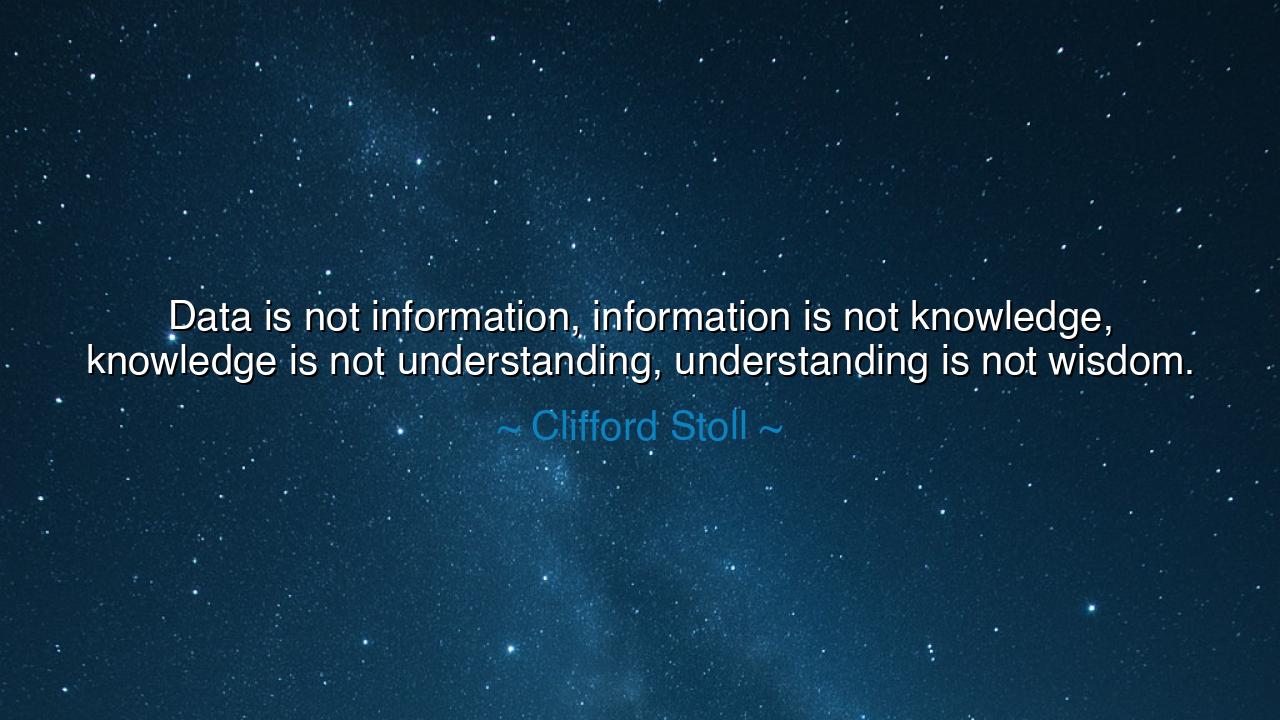
Data is not information, information is not knowledge, knowledge
Data is not information, information is not knowledge, knowledge is not understanding, understanding is not wisdom.






“Data is not information, information is not knowledge, knowledge is not understanding, understanding is not wisdom.” So spoke Clifford Stoll, the astronomer and thinker who saw that in the age of machines and networks, humankind risked confusing abundance for insight. His words form a ladder of discernment — a path from the rawness of data to the light of wisdom — and each step demands a deeper transformation of the mind. In this saying lies both warning and revelation: that while we live in a time overflowing with data, few among us have learned how to rise beyond it toward true wisdom.
In the beginning, there is data — mere fragments, points, numbers, symbols. It is the raw clay of reality, untouched and unshaped. Alone, it means nothing. Just as a stone by the river is not yet a statue, so data is not yet understanding. It must be gathered, arranged, given context — and only then does it become information, something that begins to speak. But as Stoll reminds us, even this is not enough. The modern world, drowning in information, has mistaken the echo for the voice. We scroll, we store, we calculate, and we call it learning — but what we possess are only pebbles of truth, not the mountain itself.
From information one may ascend to knowledge — when the mind begins to see patterns, to draw meaning from the flow of facts. Knowledge is structure, coherence, the recognition of cause and effect. Yet even here, many stop climbing. For knowledge without humility can become arrogance; it is the library unvisited by the soul. To truly learn is to see that knowing is not owning. As the ancients taught, “The more I learn, the more I realize how much I do not know.” Knowledge, though noble, is still not understanding. It is the map, not the journey.
Understanding begins when knowledge touches the heart. It is when the mind not only sees but feels — when facts are no longer external, but become part of the spirit’s own rhythm. Understanding allows us to empathize, to connect, to see truth not as theory but as life. It is the difference between knowing that fire burns, and understanding what it means to be burned. The wise teachers of old — Confucius, Socrates, Buddha — all walked this path. They studied the world not merely to know it, but to know themselves. For understanding is the bridge between intellect and wisdom, between the seen and the unseen.
And finally comes wisdom, the summit of Stoll’s ladder. Wisdom is not merely to comprehend, but to live rightly. It is the harmony between thought and action, between truth and compassion. Wisdom is the art of using knowledge for the good, of seeing beyond self-interest into the eternal. The scholar may have knowledge, but the sage has wisdom. The one can explain life; the other can live it. Wisdom, unlike data, cannot be measured. It cannot be downloaded or written in code. It is the






AAdministratorAdministrator
Welcome, honored guests. Please leave a comment, we will respond soon